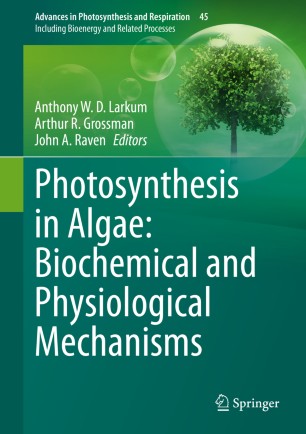

Most ebook files are in PDF format, so you can easily read them using various software such as Foxit Reader or directly on the Google Chrome browser.
Some ebook files are released by publishers in other formats such as .awz, .mobi, .epub, .fb2, etc. You may need to install specific software to read these formats on mobile/PC, such as Calibre.
Please read the tutorial at this link: https://ebookbell.com/faq
We offer FREE conversion to the popular formats you request; however, this may take some time. Therefore, right after payment, please email us, and we will try to provide the service as quickly as possible.
For some exceptional file formats or broken links (if any), please refrain from opening any disputes. Instead, email us first, and we will try to assist within a maximum of 6 hours.
EbookBell Team

0.0
0 reviewsAlgae, including cyanobacteria, are in the spotlight today for a number of reasons; firstly it has become abundantly clear over recent years that algae have been neglected in terms of basic research and that knowledge gap is being rapidly closed with the establishment of some surprising discoveries, such as the presence of Near-Infra-Red-Absorbing cyanobacteria and a wealth of natural products; secondly molecular approaches have provided a wealth of approaches to genetically modify algae and produce value-added products; thirdly it has become clear just how important, marine phytoplankton is to global carbon capture and the production of food globally; and fourthly, it has also become clear that algae present unparalleled opportunities to generate biofuels in a sustainable and non-polluting way.
This volume presents 15 chapters by world experts on their subjects, ranging from reviews of algal diversity and genetics to in-depth reviews of special algal groups such as diatoms (which account for over 30% of marine carbon capture). Other chapters chart the ways in which this carbon capture occurs or how there are a multiplicity of ways in which algae intercept sun light and deploy this energy for carbon capture. A fascinating aspect here is the way in which sun light is harvested. A special chapter is devoted to the very recent and exciting possibility that algae use coherent light energy transformation to enhance the efficiency of light capture, an aspect of quantum physics that has implications for future developments at several levels and a variety of industries. Just how and why algae use Chlorophyll a as the major light capture pigment is discussed in several chapters. However, attention is also given to those cyanobacteria, which have been found to use the special Near-Infra Red absorbing chlorophylls mentioned above. And attention is also given to those algae that employ phycobiliproteins to fill in the “green window”, i.e., the spectral region from 400 – 650 nm, which is not efficiently covered by chlorophyll and carotenoid pigments. Photoinhibition and photoprotection is the subject area of several chapters and one which it is essential to understand a we work towards greater efficiency of algal photosynthesis. A final chapter is devoted to understanding the molecular basis for coral bleaching, a much-neglected area that is essential in trying to come up with solutions to this very worrying phenomenon, caused by global warming and ocean acidification.
This is a book for research scientists, environmentalists, planners in a range of areas including those of marine resources, nutrient control and pollution of water bodies and that growing body of concerned citizens interested in controlling carbon emissions and global warming. Special attention has been given to generating a set of articles that will be read by university students, informed laymen and all those whose wish to understand the rapid changes that have come about in our knowledge of algae over the past decade.